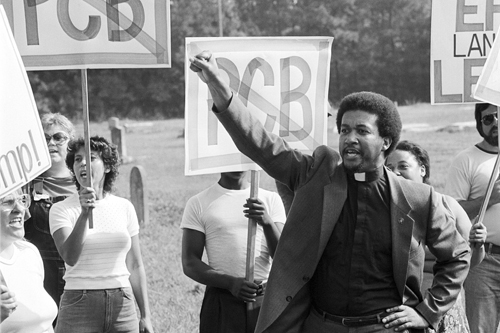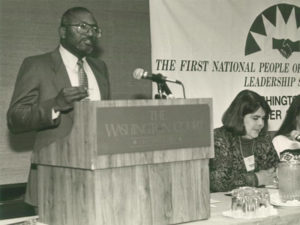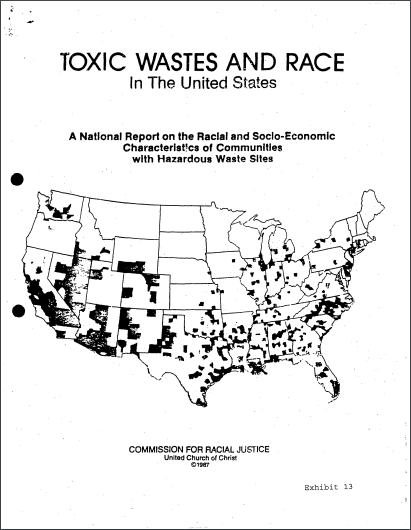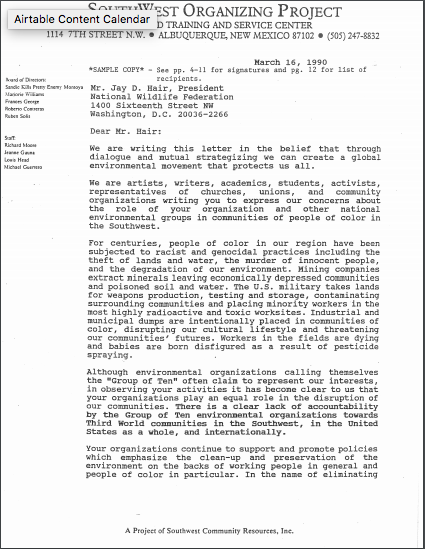African Americans have been fighting for environmental justice for decades. From sparking the modern Environmental Justice Movement, to conducting key research on environmental pollution, to founding countless grassroots organizations, their legacy is undeniable. On the occasion of Black History Month, we want to honor the legacies of African American leaders in the Environmental and Climate Justice Movement.
Here are 5 critical ways African American leaders have advanced Environmental Justice:
1) Founding the Environmental Justice Movement
Black communities have always been targeted as dumping sites for toxic pollution. This issue was brought into the national spotlight in 1982 when a landfill in Warren County, North Carolina became the proposed site for dumping toxic soil filled with polychlorinated biphenyls – chemicals that were commonly found in electrical equipment with a known range of adverse health impacts. Warren County was one of the only majority African American counties in the state. In response, Black communities staged a sit in to stop the dump and protect their community from harmful pollution. Although they were ultimately unsuccessful, this event is widely seen as the beginning of the environmental justice movement.

Rev. Benjamin Chavis at Warren County PCB Landfill Protest – Photo from the United Church of Christ
2) Hazardous Waste and Race
Civil rights leader, Rev. Benjamin Chavis, led the United Church of Christ Commission for Racial Justice to publish a report named Toxic Wastes and Race in the United States in 1987. It revealed that race was the most significant factor in the location of hazardous waste sites. This report was one of the first of its kind to illustrate the urgency for environmental justice.
3) Calling Out Racism in the “Group of Ten”
In 1990 Black environmental justice leaders played a critical role in calling attention to the racist practices of the “Group of Ten,” a group of national and predominantly white environmental organizations. They co-wrote a letter with Indigenous, Latinx, Asian American and Pacific Islander environmental justice leaders calling out these groups for the lack of people of color in their leadership and the harm they were causing to Black, Latinx and Indigenous people. As a result, some of these organizations began addressing environmental justice in their programs and policy campaigns.
4) Developing the Principles of Environmental Justice
African American leaders convened with Indigenous, Latinx, Asian American, Pacific Islander and international leaders for the First National People of Color Environmental Leadership Summit in 1991 in Washington DC. They developed the 17 principles of environmental justice, which still serve as a basis for environmental justice organizing today.

Dr. Robert Bullard speaking at First National People of Color Environmental Leadership Summit – Photo from Drroberbullard.com
5) Sparking Community Driven Solutions
Building off of the momentum from the events above, many Black-led organizations have formed to advance environmental justice at the local, state and national level in the United States. West Harlem for Environmental Action was one of the first prominent environmental justice organizations formed in 1988 to spark community driven solutions to environmental racism in West Harlem. Others include: East Michigan Environmental Action Council, Deep South Center for Environmental Justice, NAACP Environmental and Climate Justice Program, Black Belt Citizens Fighting for Health and Justice, Partnership for Southern Equity and Outdoor Afro.
Where are African Americans in the fight for environmental justice today you ask? Throughout this month we’re highlighting some of the most inspiring Black environmental justice leaders of today! So keep an eye out for more.

